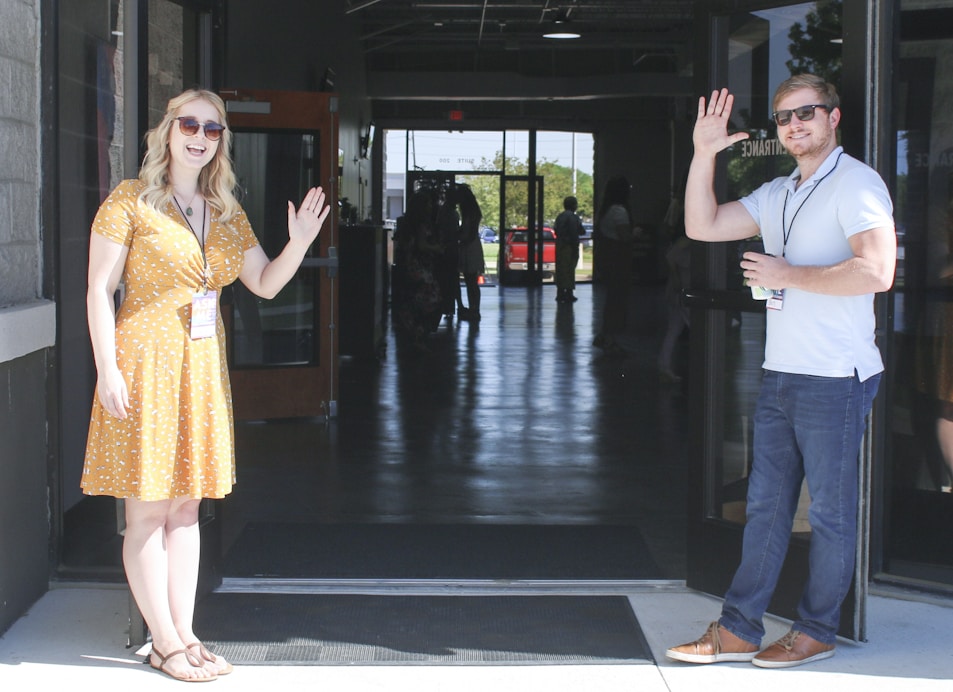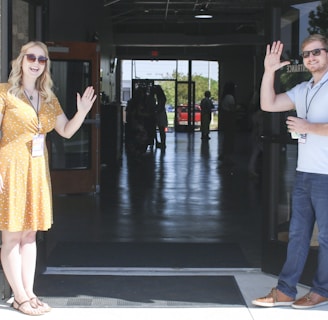Gesture as a Tool of Communication.
Gesture is a powerful and versatile tool of communication that involves the use of physical movements and non-verbal cues to convey messages, emotions, and information. It serves several important functions as a tool of communication. Here are key aspects of gesture as a tool of communication.
COMMUNICATION
10/23/20232 min read


Gesture as a Tool of Communication.
Gesture is a powerful and versatile tool of communication that involves the use of physical movements and non-verbal cues to convey messages, emotions, and information. It serves several important functions as a tool of communication. Here are key aspects of gesture as a tool of communication.
Enhancing Verbal Communication:
Gestures complement spoken language by adding emphasis, clarity, and emotional depth to a message. They can help convey tone and intention, making communication more nuanced and expressive. They can indicate enthusiasm, urgency, sarcasm, or sincerity. Gestures can provide additional information or clarification to verbal communication, making it more effective and precise.
Non-Verbal Expression:
Gestures are a form of non-verbal communication that complements and often reinforces spoken or written language. Gestures include body language, facial expressions, hand movements, and postures, all of which contribute to non-verbal communication. Gestures allow individuals to express emotions, attitudes, and feelings non-verbally. A smile, a frown, or a raised eyebrow can convey happiness, sadness, or surprise, respectively. A nod can indicate agreement or understanding, while a shake of the head can convey disagreement or refusal. Gestures can be used to represent complex or abstract concepts that may be difficult to convey through words alone and making it easier to convey abstract or visual ideas.
Convey Emotions:
Gestures allow individuals to express a wide range of emotions, such as joy, sadness, anger, surprise, and empathy, making communication more emotionally resonant.
Facilitate Understanding:
In situations where verbal communication is limited, gestures can aid in conveying meaning and ensuring comprehension. This is valuable in noisy environments or when language barriers exist.
Social Interaction:
Gestures are integral to social interactions and can help establish bond, build trust, convey empathy, and create a sense of connection between individuals.
Cultural Signifiers:
Gestures are culture-specific, with different cultures assigning unique meanings or interpretations to certain movements. For example, the "thumbs-up" gesture can signify approval in some cultures but may be offensive in others. Understanding cultural norms is significant to effective communication. The meaning of gestures can be context-dependent. The same gesture may convey different meanings in different situations or cultures. Some gestures, like smiling to indicate happiness or waving to greet someone, are universally understood across cultures.
Gesture Recognition :
Technology: Advancements in technology have led to the development of gesture recognition systems used in various applications, including gaming and virtual reality. Gesture-based interfaces are used in devices like touchscreens and motion-sensing devices for human-computer interaction.
Deceptive Communication:
People may use deceptive gestures intentionally or unintentionally to hide their true feelings or intentions, which can be important in situations like negotiations, conflict resolution and interpersonal relationships.
Child Development:
Infants and young children often use gestures before they can speak fluently. This early use of gestures helps them communicate their needs and desires, emotions.
Helpful for Hearing Impairment:
For individuals with speech or hearing impairments, sign language is a prominent example of how gestures serve as a complete and rich system of communication.
Conflict Resolution:
In negotiations or discussions, gestures can signal agreement, disagreement, or compromise, aiding in conflict resolution.
Educational Tool:
In teaching and learning, gestures can be used by educators to illustrate concepts, making them more accessible and engaging for students.
Memory retention:
Gestures can aid in memory retention. Gestures can reinforce or complement the verbal message, making it more convincing and memorable. People often use hand movements or visual cues when trying to remember something, which can assist in recall.
In summary, gestures are a multipurpose and fundamental component of human communication. They serve to enrich, clarify, and facilitate communication in both verbal and non-verbal contexts. They serve various purposes and can bridge language barriers, making them a vital aspect of communication in diverse contexts. Gestures contribute to effective interpersonal and cross-cultural interactions.
© 2023 Copyright Amna Sadaf
